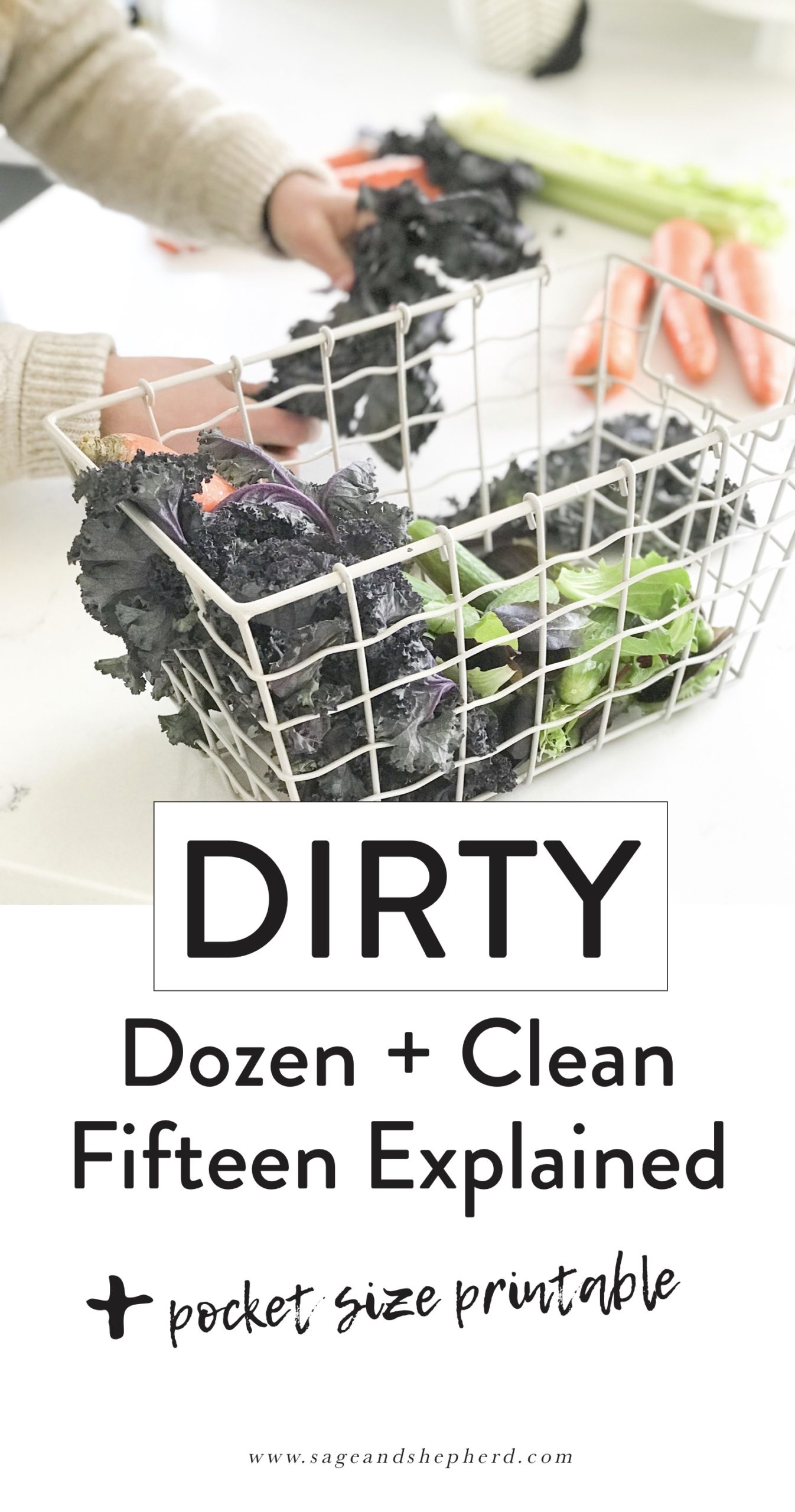Contents
Have you ever heard of the dirty dozen list? It’s the handiest thing ever. The EWG puts together this list each year stating what the best and worst vegetables are for pesticide residue. It’s a little helping hand at the grocery store. I am seriously going to print out this dirty dozen list and bring it with me the next time I go shopping.

Each year they test certain fruits and vegetables to see if it comes back positive for multiple types of pesticide residue. And as you can see with these facts below from EWG’s website, there are a lot of residues.
- “A single sample of strawberries showed 20 different pesticides.”
- “Spinach samples had, on average, twice as much pesticide residue by weight than any other crop.”
Wow, eh? I know. I was surprised to see some of my favourites on there as well.
Why Should You Care about the Dirty Dozen? You should care about it because it goes into your body! After watching this video, I was even more sold than I already was. It’s your health, it’s your kid’s health, it’s your spouse’s health, your friend’s health, your family’s health. And I know organic can be expensive, but that is the beauty of this list. If you can’t afford to buy everything organic then strive to only buy these 12 things. But even better, try growing you our food!
Why is the Dirty Dozen so Dirty? Well, pesticides are bad for you. Plain and simple. They affect soil health and animals, so why wouldn’t they affect us? Another thing I found on the EWG’s website was this interesting urine test: people who buy organic food more often than not found significantly fewer pesticides in their urine. Here are a couple of other side effects pesticides have on our health:
- Delayed brain development in children
- higher susceptibility to pesticides in children
- pediatric cancers
- decreased cognitive function
- behavioural problems
Crazy, right? To justify it a bit, this study is done in the US and of course, this will not happen to every child or adult who eats non-organic food. I simply put this here just so you are aware and can make proper choices when you feel is right for you.
Without further ado, here is the list!
The Dirty Dozen
- Strawberries
- Spinach
- Nectarines
- Apples
- Peaches
- Pears
- Cherries
- Grapes
- Celery
- Tomatoes
- Sweet Bell Peppers
- Potatoes
What About the Clean Fifteen? On a lighter note, there is also a list that cumulates the cleanest fruits and vegetables – thank goodness! The clean fifteen are 15 fruits and vegetables that have very little pesticide residue found on them. Here are some facts about their research:
- “No single fruit sample from the Clean Fifteen tested positive for more than four types of pesticides.”
- “Multiple pesticide residues are extremely rare on Clean Fifteen vegetables. Only 5 percent of Clean Fifteen vegetable samples had two or more pesticides.”
And here they are!

The Clean Fifteen
- Sweet corn
- Avocados
- Pineapples
- Cabbage
- Onions
- Frozen Sweet Peas
- Papayas
- Asparagus
- Mangos
- Eggplant
- Honeydew
- Kiwi
- Cantaloupe
- Cauliflower
- Grapefruit
A Couple Other Tips
- Try your best to always choose organic everything! But if you cant, at least by organic versions of the dirty dozen
- Always wash your produce, it gets rid of some surface pesticides (but the ones we’re talking about go deeper)
- Grow your own fruits and vegetables to ensure safer and healthier produce











Leave a Reply